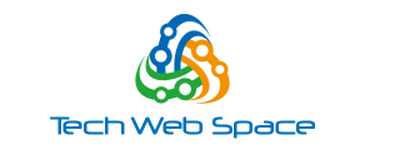
This blog demystifies the entire process of planning a SaaS product — from business logic definition to architecture, security, integrations, and scaling. Built for companies hiring a SaaS app development firm, it provides an end-to-end roadmap for creating a stable, user-centric SaaS web application that can scale with your users and market.
A Step-by-Step Guide to Planning Your SaaS Product
For companies getting ready to develop a successful SaaS solution.
Developing a SaaS product is not merely coding. It’s about fixing actual issues with well-designed technology, clean architecture, and intelligent business logic. Whether you’re bootstrapping a new startup or growing your tech business, this guide takes you through the real-world planning required to build a solid foundation.
If you are dealing with a SaaS app development company or developing in-house, the below steps will empower you to save your money from unnecessary mistakes and deliver actual value.
1. Start with the Business Logic
You should establish your core workflows and logic before building anything. SaaS web application development should always start with distinct questions:
- Who are the users?
- What’s their goal?
- What data do they need to input, see, and act on?
Document it all — use flowcharts or applications such as Lucidchart. A SaaS mobile app development company can later convert this into a product backlog or wireframes. But it must begin with your company thinking through the way the app needs to work — not necessarily the way that it appears.
Gartner reports global spending on SaaS tools was total $197 billion in 2023-24, an increase of nearly 18% from the year before. That level of growth indicates the demand — and competition — and necessitates good planning even more so.
2. Choose the Right Architecture for Your SaaS
For SaaS web application development, your architecture should be capable of handling your product’s scale and velocity. Most products start off with a monolithic architecture, which is acceptable for MVPs.
For growing SaaS platforms:
- Utilize modular monoliths or microservices if your system has to be highly available.
- Opt for multi-tenancy or single-tenant depending upon how isolated the customer data must be.
- Collaborate with a SaaS app development company to get the right architectural choices baked in early on — it becomes costly to change later.
3. Design a Solid Data Architecture
Data architecture is the backbone of any SaaS. Relational databases such as PostgreSQL or MySQL remain the gold standard in SaaS web application development because they are reliable and structured.
Ask yourself:
- Are your data models normalized?
- Do you need row-level security?
- Are backups automated and offsite?
An experienced SaaS app development firm will determine your data model, recommend optimal storage strategy, and put in place logging and data retention policy right from the beginning. Get step-by-step guidance to build your SaaS product.
4. Handle Authentication and Authorization Properly
Security is paramount. Whether you develop it in-house or use the likes of Auth0, authentication needs to be robust. An experienced SaaS app development firm understands how to:
- Implement JWT-based authentication
- Set up RBAC or ABAC
- Build secure, scalable team-based user management
- Support enterprise needs like SSO, MFA, or audit logging
This isn’t optional in SaaS web application development — especially if your app will handle sensitive or enterprise data.
5. Build a Strong API Layer
Your frontend, mobile app, and integrations will all rely on your APIs. If you’re planning your first product, consider how external tools or teams will interact with your backend.
For SaaS web application development, define:
- REST vs GraphQL — what suits your use cases better?
- Rate limits and usage tracking
- Authentication via OAuth2
- API versioning and documentation
A reputed SaaS application development firm shall walk you through API-first design concepts, minimising rework and enabling scale.
6. Choose the Right Frontend Tech
Your front end needs to match the level of complexity and interactivity that your app should have. React or Vue can be a safe bet for the majority of SaaS web app development assignments. Consider:
- Component libraries (Material UI, Tailwind)
- State management (Redux, Pinia, Zustand)
- SSR needs (Next.js/Nuxt)
- Accessibility and mobile responsiveness
When you engage a SaaS app development firm, ensure that they have frontend experts who care not only about aesthetics but also usability and performance.
7. Get CI/CD Right From Day One
You’ll require a CI/CD pipeline in order to push code securely and fast. No legitimate SaaS app development agency deploys code manually into production environments these days.
Set up:
- CI: GitHub Actions, CircleCI, GitLab CI
- Docker-based containers for reproducibility
- Blue/green or canary deployment strategies
When designing SaaS web application development, these configurations minimize bugs, accelerate releases, and have your team focused on value — not firefighting.
8. Map Out Your Integration Strategy
Your product will have to integrate with third-party tools. It might be payments, email, CRM, or support tools. In contemporary SaaS web application development, integrations are the norm.
Standard integrations:
- Stripe, Razorpay — for billing
- SendGrid, Mailgun — for transactional emails
- Zapier, Make — for low-code automation
- Slack, Teams — for notifications
In particular, the retail and e-commerce segment of the SaaS industry is projected to grow from $48.1 billion in 2022 to $138.9 billion by 2027. That level of market growth requires integration with CRMs, ERPs, and other platforms prevalent in eCommerce operations.
A properly equipped SaaS application development firm will design with clean APIs and pluggable architecture so these do not hold you back late
9. Plan for Compliance and Data Protection
If you are working with user data, this is a given. SaaS web application development must include:
- GDPR, HIPAA, or SOC2 requirements (based on your market)
- Data encryption (at rest and in transit)
- Access controls and audit logs
- Secure password storage and token revocation
Ensure your SaaS application development company has a cybersecurity specialist on board or experience with regulated industries.
10. Build for Observability and Monitoring
Once you launch, you have to be aware of what’s working — and what’s not. Make the stack observable.
That means:
- Error monitoring (Sentry, Bugsnag)
- Performance metrics (New Relic, Datadog)
- Logs (ELK stack, Grafana Loki)
- Real-time analytics (Mixpanel, Segment)
In SaaS web application development, this enables you to act quickly on incidents, optimize performance, and make good decisions.
11. Get Your Scaling Plan in Place Early
Scaling is not merely traffic. It’s systems, teams, and support. Your SaaS app development company should be able to answer:
- How will the database scale?
- When will caching (Redis, CDN) be used?
- How are background jobs processed?
- Can we isolate noisy tenants?
In SaaS web app development, scaling elegantly usually boils down to clever planning rather than massive infrastructure.
12. Don’t Skip the Operational Layer
Finally, every SaaS product requires solid operations:
- User onboarding flows
- Customer support tools
- Product analytics
- Usage tracking and billing dashboards
A good SaaS app development company won’t simply “build the app” — they’ll assist you in building your operations around it so you can operate it like an actual business.
Conclusion
Successful SaaS products don’t begin with features — they begin with planning. If you want to be successful in the long run, you require a well-defined blueprint, strong architecture, and proper technical foundations. You build it yourself or outsource it to a SaaS app development company, utilize these steps to ensure your SaaS web application development process takes you somewhere worthwhile. Realistic planning is the true first step.
Excerpt:
A hands-on guide to designing your SaaS product with real-world advice on architecture, integrations, and technology stack choices — designed for teams that care about SaaS web application development that provides real business value.

